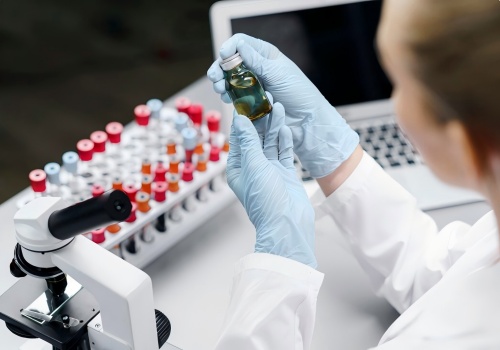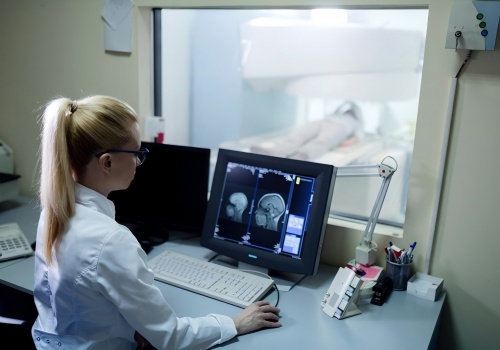Cannabigerolic Acid (CAS 25555-57-1) is the fundamental biogenic precursor and "mother cannabinoid" in the cannabis plant, serving as the central biosynthetic intermediate from which other major cannabinoids—such as THCA, CBDA, and CBCA—are enzymatically derived. This carboxylic acid-containing compound exhibits inherent bioactive properties, including potential anti-inflammatory and neuroprotective effects, and is increasingly studied for its role in early-stage cannabis biosynthesis and its direct therapeutic applications in medicinal research.
Name :
Cannabigerolic AcidCAS No. :
25555-57-1MF :
C₂₂H₃₂O₄MW :
360.49Purity :
98%Appearance :
White to off-white crystalline solidStorage Condition :
Sparingly soluble in ethanol, methanol, and DMSOChemical Properties
Chemical Name:Cannabigerolic Acid
Synonym:CBGA
CAS Number: 25555-57-1
Molecular Formula: C₂₂H₃₂O₄
Molecular Weight: 360.49 g/mol
Appearance: White to off-white crystalline solid or viscous oil
Melting Point: N/A (decomposes before melting)
Boiling Point: 535.7°C at 760 mmHg
Density: 1.082–1.10 g/cm³
Solubility:
Sparingly soluble in ethanol, methanol, and acetonitrile
Insoluble in water
SMILES Notation: OC1C(C/CC(C)/CC/CC(C)/C)C(O)C(C(O)O)C(CCCCC)C1
InChI: 1S/C22H32O4/c1-5-6-7-11-17-14-19(23)18(21(24)20(17)22(25)26)13-12-16(4)10-8-9-15(2)3/h9,12,14,23-24H,5-8,10-11,13H2,1-4H3,(H,25,26)/b16-12
Biological and Pharmacological Roles
CBGA is the precursor to major cannabinoids and exhibits diverse bioactivities:
Phytocannabinoid Biosynthesis:
Cyclizes to form THCA (psychoactive precursor), CBDA (CBD precursor), and CBCA (CBC precursor) .
Enzymatic decarboxylation yields CBG (non-psychoactive cannabinoid) .
Anti-Inflammatory:
Inhibits COX-2 and TNF-α in murine colitis models .
Anticancer:
Suppresses glioblastoma cell proliferation via ROS generation .
Antimicrobial:
Active against Mycobacterium tuberculosisand MRSA .
Neuroprotection:
Modulates PPARγ receptors to protect dopaminergic neurons in Parkinson’s models .
Mechanism of Action
Receptor Interaction:
Activates PPARγ (peroxisome proliferator-activated receptor gamma), enhancing lipid metabolism and anti-inflammatory pathways .
Inhibits TRPM7 ion channels, reducing oxidative stress .
Enzyme Modulation:
Inhibits FAAH (fatty acid amide hydrolase), increasing anandamide levels .
Medical Application




Synthesis and Production
Natural Extraction:
Isolated from Cannabis sativatrichomes (yields <1%) .
Chemical Synthesis:
Requires controlled decarboxylation of CBGA to avoid THC contamination .
Microbial Fermentation:
Engineered E. colisystems produce CBGA using heterologous enzymes
FAQ
Q: What does CBG cannabinoid do?
A: Neuroprotection, anti-inflammation, antibacterial properties, hypotension, cancer treatment, pain management and metabolic syndrome.
Q: What are the benefits of CBDA and CBGA?
A: CBDA is known for reducing inflammation and potentially fighting cancer, while CBGA may offer antibacterial and neuroprotective effects.
Q: What research is ongoing about CBGA?
A: Synthetic Biology: Engineering yeast to produce CBGA for sustainable cannabinoid synthesis.
Clinical Trials: Investigating its role in epilepsy, cancer, and neurodegenerative diseases.
Q: Is CBGA safe? Are there side effects?
A: CBGA is generally well-tolerated. Reported side effects include mild dizziness, dry mouth, or low blood pressure. No psychoactive effects are known . However, consult a healthcare provider before use, especially with medications.
Leave A Message
Scan to Wechat/Whatsapp :

